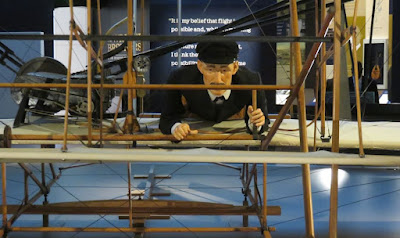 |
| The real 1903 Wright brothers Flyer in the Smithsonian. |
The Smithsonian National Air and Space Museum in Washington, D.C. opened up new and revamped galleries this month, and I was privileged to visit.
There's a lot more material, arranged with all new interpretation, but you'll still see the Wright brother's 1903 Flyer there, and the V8 motorcycle that made Glenn Curtiss the fastest man on earth in 1907.
The Wright Flyer and Curtiss motorcycle are real. (The full-size X-wing fighter from "Star Wars: The Rise of Skywalker" is an admitted movie prop.)
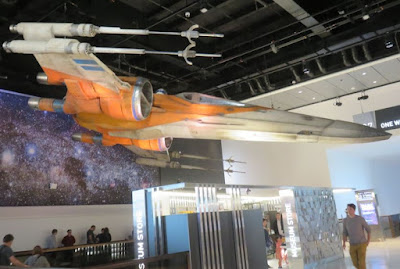 |
| Smithsonian National Air and Space Museum has X-wing fighter. |
It was all the expanded interpretation around the Wright Flyer that interested me.
The Wrights were bicycle builders from Dayton, Ohio, and the Air and Space Museum has one of the very rare examples of a Wright bicycle.
Signage notes that the Wrights realized any airplane would need the strong structure and light weight of a bicycle. They also had faith that an airplane could be controlled; after all, a bicycle could be controlled even if it could not stand up without a rider to balance it.
What really caught my eye was a separate display of scale models of the airplanes produced by the Wright Company before 1916, when Orville Wright sold the company (Wilbur had died in 1912).
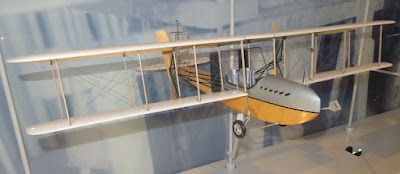 |
| Wright Model F used chain drive from fuselage to the propellers. |
Orville Wright estimated that the Wright Company built only approximately 120 airplanes across all of its different models between 1910 and 1915.
These varied greatly in design, but they were all alike in that they each were powered by only one motor, and this was the case even when they boasted two propellers.
What? How?
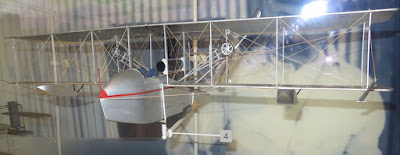 |
| Wright Model G Aeroboat stuck with chain drive to props. |
It was easy, and this is what really amazed me: the Wright airplanes of the 19-teens made frequent use of chain drive to their propellers. It was as though the company founded by bicycle makers could not do without it.
Even with the motor mounted ahead of the wings, in the fuselage, the Wright Company typically did not just bolt a propeller to the crank shaft. Instead, as in the Model F, a long run of chain would emerge on each side of fuselage, carrying power to wing-mounted propellers.
It looks crazy, like something that would exist in a Steampunk or other alternative universe.
 |
| Wright Model K: chain drive from near front of fuselage to props. |
For the Wrights, chain drive solved more problems than it created. They had used two pusher propellers on the early Flyers and, of course, they wanted them to counter-rotate to balance one another. This was accomplished by simply mounting one of the two chain runs to the propellers in the shape of a figure 8.
Only a bicyclist or motorcyclist would have thought of that.
There is a list of early Wright airplanes here.
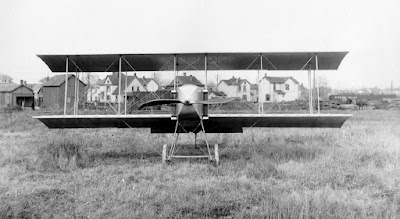 |
| Model L, last airplane produced by the Wright Company, finally attached the propeller directly to the motor, eliminating chain drive. More photos of actual Wright airplanes here. |
The listing notes that the Wright Company never made a Model I or a Model J. These were made by the Burgess Company, which licensed Wright patents. The Wright Model L of 1916, last product of the company, finally did away with chain drive.
























No comments:
Post a Comment